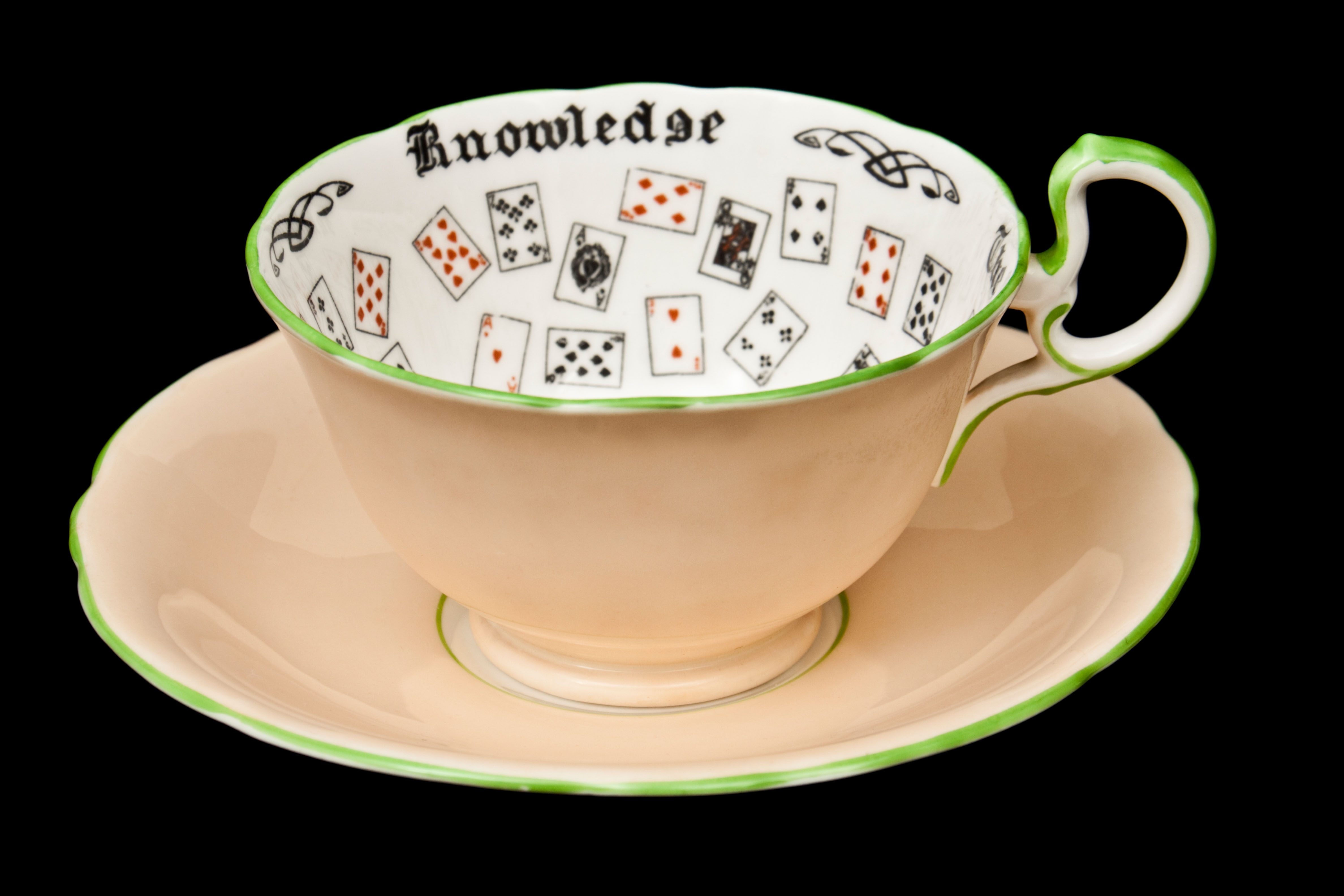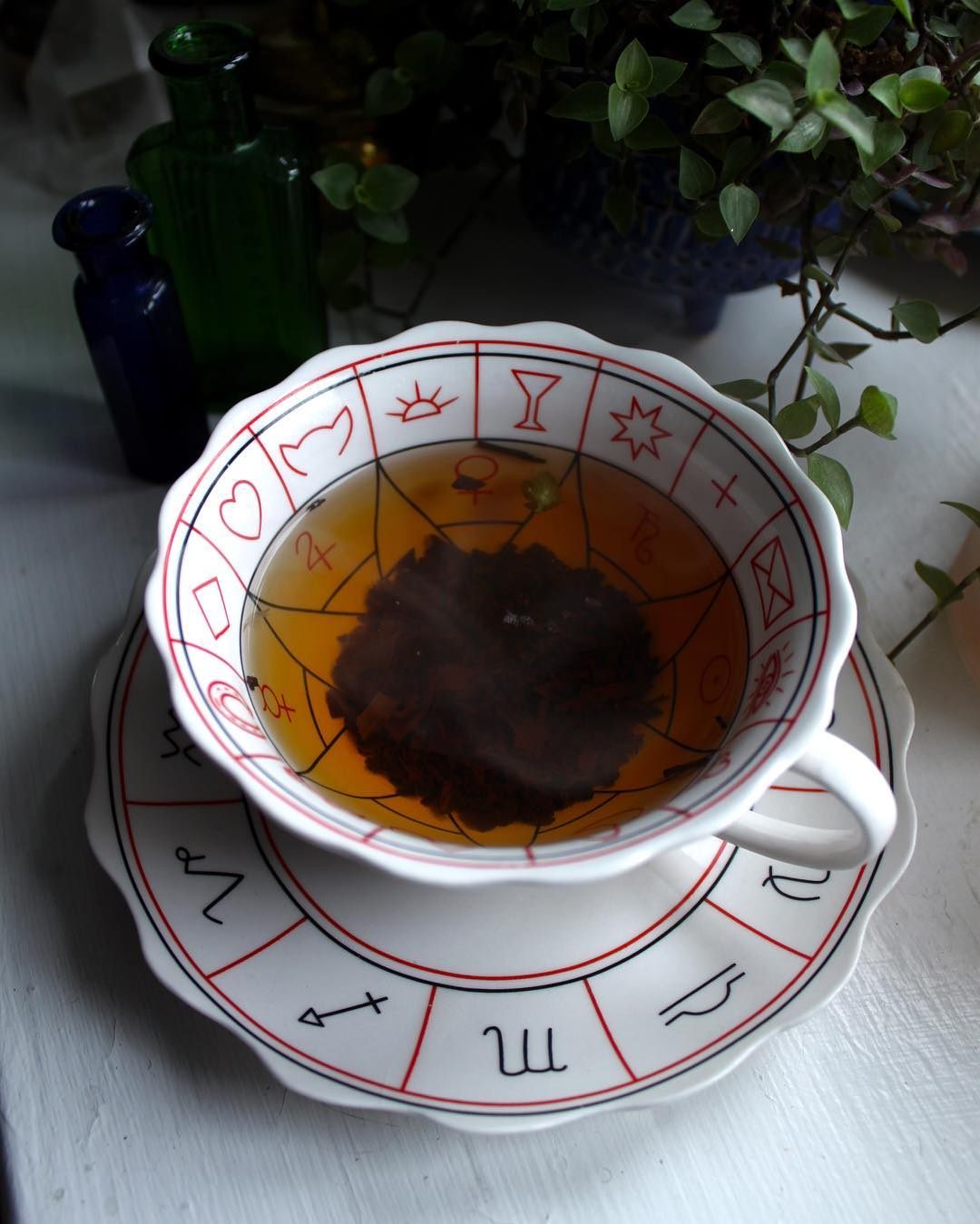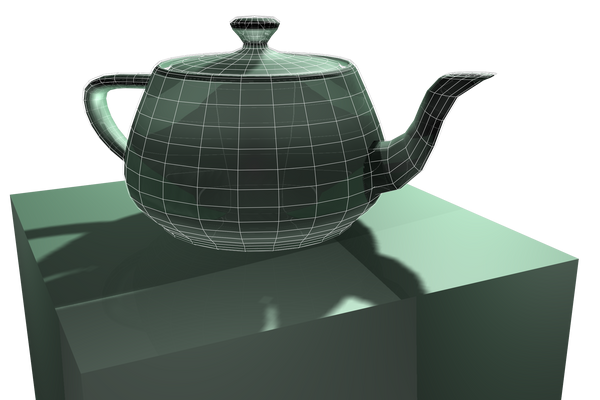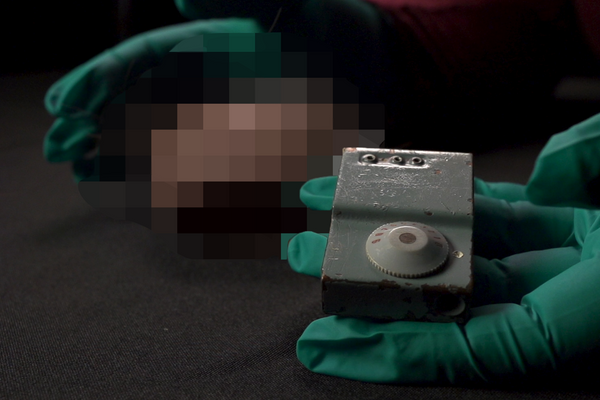These Fortune-Telling Tea Cups Made Divination Easy
“Many Curious Things I See, When Telling Fortunes In Your Tea.”

Reading tea leaves is no easy task. That’s true whether or not you believe that predictions of love and loss are contained in patterns of leftover leaves from a cuppa. Tasseography, or tea-leaf reading, has been practiced for centuries. Keen-eyed fortune tellers, it’s said, can derive a wealth of meaning from different shapes formed by tea leaves at the bottom of a cup. But what about the amateur fortune-teller, who can’t tell a skull from a set of stairs?
Enter the fortune-telling tea cup, which first emerged in the early 20th century. Thanks to its paint-by-numbers approach to tasseography, anybody could tell a fortune. Soon, a number of porcelain-makers in the U.S. and England were making their own versions. From the outside, some fortune-telling cups looked like elegant, normal cups. But on the inside, they contained arcane symbols. Wherever tea leaves landed indicated a fortune-telling clue.


The cups were part of a craze for all things occult that lasted well into the 20th century. With new discoveries and technological wonders discovered daily, the mystical didn’t seem that crazy. Having one’s fortune told became a party game, and even an industry. In the 1920s, fortune-telling cafes sprang up in urban centers, and many offered tea leaf readings. So it’s not a surprise that porcelain-makers got in on the trend. Fortune-telling cups were sold in small magazines and even books: One 1907 juggling tome sold a cup “marked with the signs of the Zodiac, all arranged in a certain mystic order.” Interested readers could also buy a crystal ball and “mesmeric discs.”
Fortune-telling cups came in various designs. According to The Mystic Tea Room, an online museum of fortune-telling cups, there are four typical patterns. Astrological signs, numbers, playing cards, or meaningful symbols, called “omens,” are usually printed on cup interiors. Other cups occasionally have designs on the exterior or even the saucers. One common design came with a couplet written along the edge: “Many Curious Things I See, When Telling Fortunes In Your Tea.” Cups were often sold individually, with instructions on their use for fortune-telling amateurs. These days, manufacturers are few and far between, and many older models are sold online as antiques.

One such pamphlet, published in 1924, laid out the rules for discerning a fortune from a “Cup of Knowledge,” which had a playing card design. After drinking the tea, the cup was to be turned three times, then flipped upside-down on a saucer. After most of the tea had trickled away, the leaves sticking to the cup could be read. Leaves closer to the rim indicated that predicted events would happen soon, while leaves atop each card could denote anything from “a dance” (the nine of clubs ) to “happiness and prosperity” (a Joker, oddly). But particular sets of cards together had their own meanings too. Readers were cautioned to watch out for the “evil intentions” denoted by two Jacks.
Not everyone who owned a cup was a believer. Many explanations of leaf-reading start out with a disclaimer that it’s all in fun. The number of cups in antique stores and on eBay are proof that our highly-caffeinated elders found them very fun indeed.
Gastro Obscura covers the world’s most wondrous food and drink.
Sign up for our regular newsletter.
































Follow us on Twitter to get the latest on the world's hidden wonders.
Like us on Facebook to get the latest on the world's hidden wonders.
Follow us on Twitter Like us on Facebook